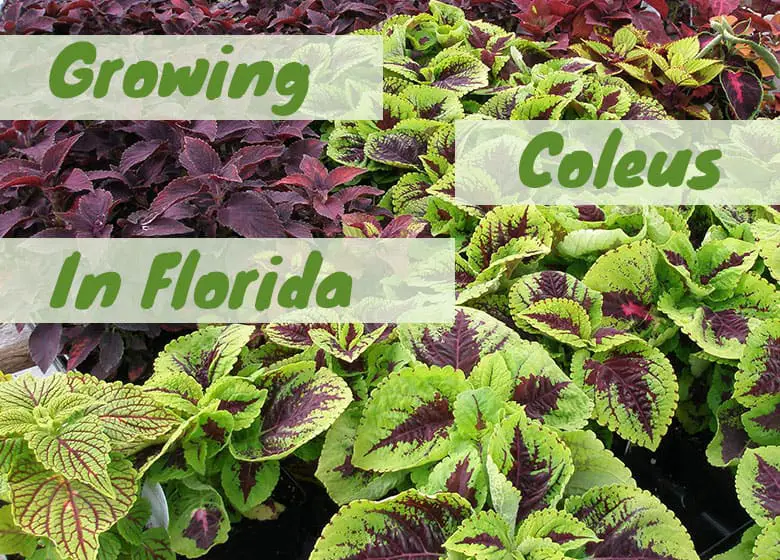
Florida gardeners desiring to add a blast of constant color to their gardens cannot go wrong growing coleus (Coleus x hybridus). The robustly colored foliage retains its eye-catching good looks even through the state’s hottest summers and best of all, there’s over 200 varieties from which to choose.
Coleus is a durable and easy to grow plant, standing up to Florida’s year-round warm temperatures, so you don’t have to be a gardening rock star to have it thrive. Even black thumb gardeners should be successful growing coleus. With so many stunning choices, don’t be surprised if you end up gracing your landscape with several varieties instead of just one.
Continue reading because we’ve taken the mystery out of growing coleus in Florida and give you all the tips and variety suggestions to have this flamboyantly colored beauty flourish.
Coleus Growing Tips
Flowering plants aren’t the only ones that add pops of color to the garden. With its prized colorfully patterned and velvet-like foliage in hues of green, burgundy, orange, pink, purple, bronze and red, as well as differing leaf shapes, coleus is bound to make a dramatic statement wherever it’s growing in the landscape.
Coleus does produce insignificant violet or blue flowers, but they’re nothing compared to the multicolored foliage. Additionally, it’s recommended to remove any blooms to promote the growth of additional leaves. With coleus, it is all about the foliage.
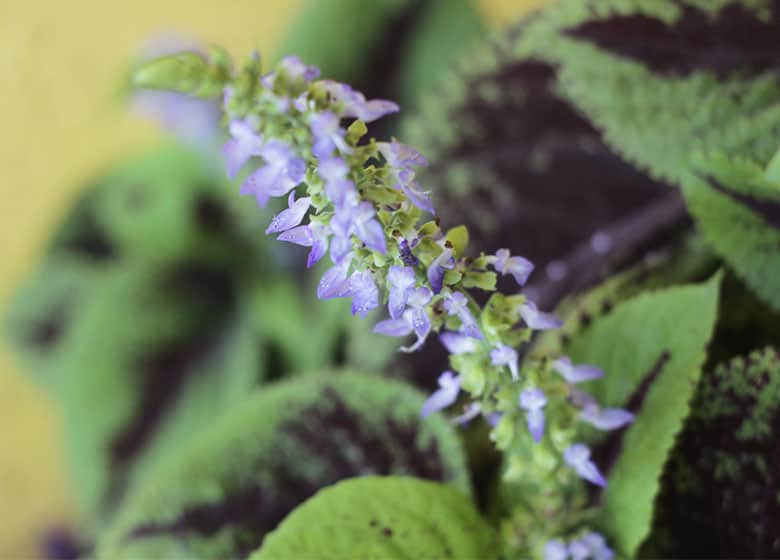
All types of coleus require the same cultural conditions for good growth, regardless of where you reside in the state and whether they have an upright or trailing habit. However, the amount of preferred light depends on the specific cultivar you are growing, so read the plant tag listing the coleus’ preferences before planting in a permanent location.
Specifics for good growth and continued care include:
Soil: Coleus grows in a variety of acidic Florida soils, including sand, loam and clay provided they drain well. If you are growing your coleus in containers, use a rich, well-drained potting mix. Soils that remain soggy and don’t drain well can create problems with rot.
Moisture: To keep your coleus plants from wilting, especially during hot and dry Florida summers, water regularly. Depending on local weather conditions, you may have to give landscape and potted plants a drink of water daily.
Fertilizing: Coleus plants aren’t heavy feeders and actually, too much fertilizer can burn plants, create problems with root rot and dim the foliage colors. Use a slow-release blend to feed coleus in the landscape, applying in spring. Additionally, you can feed potted coleus using a half-strength solution of a houseplant blend applied every four to six weeks.
Pruning: To retain lush foliage, prune off the coleus flowers as they appear using sterilized pruning tools. You can also prune off leggy stems to promote additional branching, creating a fuller plant.
Containers: Always use containers that have bottom drainage to prevent root rot.
Best Varieties of Coleus for Florida?
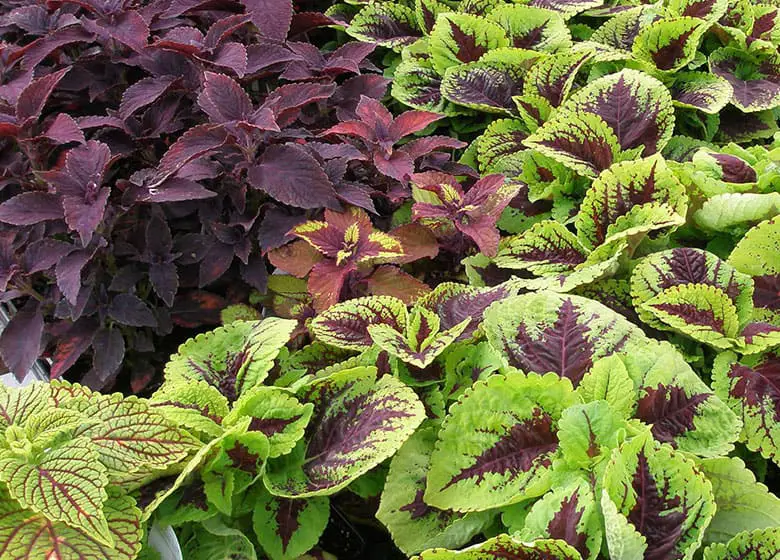
Florida gardeners have choices in a large variety of coleus cultivars that will thrive in their landscapes. In fact, you can usually find a wide variety of types at your local garden center starting in spring. If you’d rather grow seeds than transplants, you can purchase them from a host of different online plant sellers that will also grow well in landscapes throughout the state.
Additionally, there are multitudes of different coleus cultivars developed over the years by the University of Florida’s Institute of Food and Agricultural Sciences with all thriving throughout the state. You can find many of these cultivars marketed through Costa Farms, Proven Winners and BallFloraPlant.
Some coleus cultivars that grow well in all portions of Florida include:
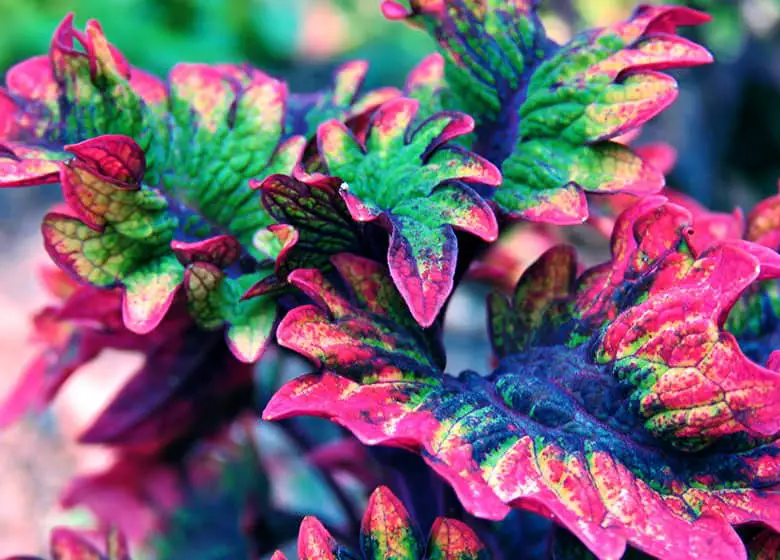
Twist ‘n’ Twirl™: A unique coleus due to its sharply lobed, multi-colored leaves in hues of yellow, reds, orange, dark and light green. Shaped like a cut flower, the leaves have a twisting appearance. The coleus can grow up to 4 feet tall and wide, preferring partial sun.
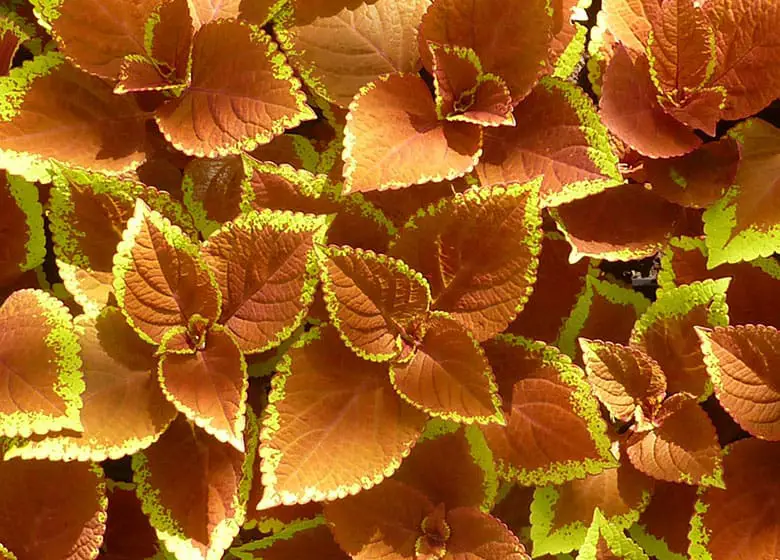
Trusty Rusty™: Thriving in both sun and shade, Trusty Rusty coleus makes an eye-catching addition to gardens with its coppery leaves boldly lined in yellow. Plants average around 18 inches tall with an upright habit.
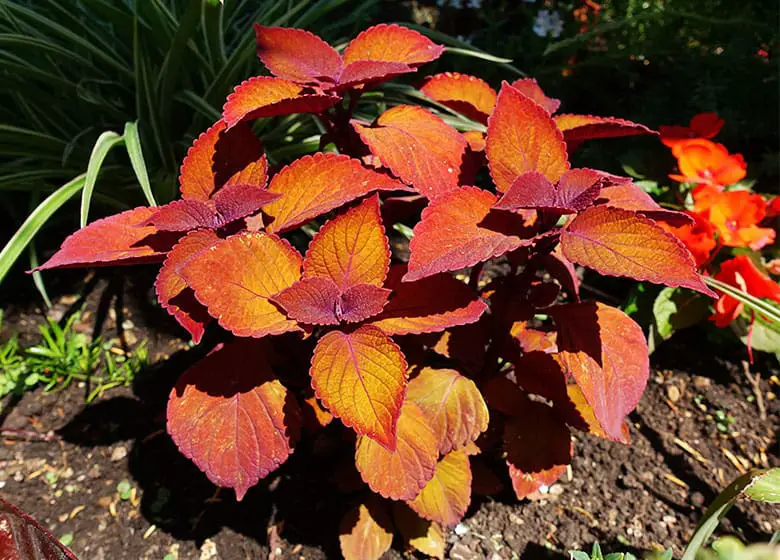
Mainstreet Wall Street™: Mainstreet Wall Street coleus makes a bold statement in the garden with its robust growth and richly colored reddish-orange foliage. Plants thrive in partial sun to shade and have an upright habit growing around 18 inches tall.
Wasabi™: With its ease of growth and thick habit, Wasabi adds a blast of chartreuse color wherever used in the landscape. This hardy coleus grows 18 inches to 30 inches tall and thrives in partial sun, as well as full sun if given adequate water.
Flame Thrower Chipotle™: Thriving in full sun or shade, Flame Thrower Chipotle coleus is an attention grabber in the landscape with its multi-colored foliage in colors of chartreuse, purple and dark burgundy. Plants average around 24 inches tall.
Best Time to Plant Coleus in Florida?
The best time to plant heat-loving coleus into the landscape or in containers depends on where you reside in Florida. Northern Florida and portions of Central Florida that regularly receive frosts or freezes should wait until the weather warms in spring before planting frost-sensitive coleus.
Those residing in southern regions of the state where frosty and freezing temperatures aren’t a problem can plant year-round. Coleus is native to tropical regions with consistently warm temperatures and cannot tolerate frosts or freezes.
However, if you live in a cooler area of the state and grow your coleus in containers, you can bring the plant indoors to a bright location before Old Man Winter pays a visit.
How Long Does Coleus Live in Florida?
Most varieties of coleus are classified as tender evergreen perennials, however, because the plant is so inexpensive, most gardeners treat them as annuals and replace with new each season.
If you live in an area with consistently warm temperature without threats of frosts or freezes, you can expect your coleus plants to thrive for several seasons. Additionally, you can grow them inside containers and bring them indoors for protection during winter, and bring them back outdoors when temperatures warm in spring.
Does Coleus like Sun or Shade?
All varieties of coleus grow well in partial shade. However, there are quite a few choices developed to thrive in sunnier conditions. Always check the plant tag to see the particular variety’s preferred light conditions and if it can tolerate growing in full sun.
If unsure, err on the side of caution and plant the coleus in a partially shady area of the landscape. Coleus growing in too much sun will usually suffer washed out leaf colors and daily wilting, regardless of the amount of water given. If this happens, you can transplant the coleus into a shadier location.
Common Landscape Uses for Coleus?
Coleus has multiple uses in the landscape where you desire a blast of vibrant color and interesting texture. Plants work well used along borders, planted in mixed beds, used as vibrantly colored specimens, shade gardens or adding vibrant color to an entranceway. For extra appeal, plant several different colored varieties together.
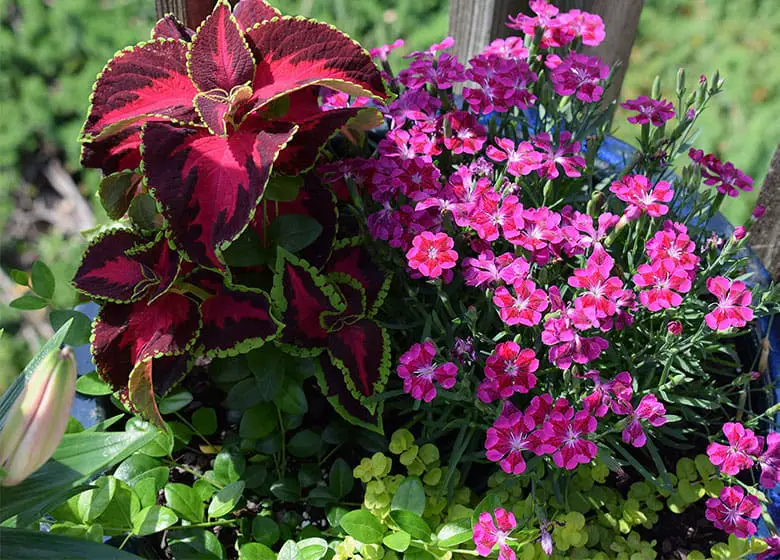
They can also liven up a porch or patio area with their rich color grown in containers. Trailing types also work well used in hanging baskets. Coleus also grows well indoors, provided the plant gets adequate light.
With their hardy nature, ease of growth, endless choices of rich multihued foliage and ability to grow in all areas of Florida, adding coleus to your landscape will definitely bring eye-grabbing attention wherever used. Who needs flowers when the colorful coleus foliage has so much to offer the garden?
You might also like


